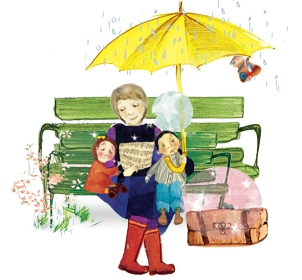Gilles Tibo
1. Where did you find the inspiration to write this story?
While one of my friends was mending a hole in her sock, I asked her, laughing, if she could mend a broken heart. After hesitating for a few seconds, she said that it would take much more than a needle and thread to fix a broken heart.
It was at that moment that I thought of writing a story about how to repair a broken heart.
So I went to my computer and wrote a first draft, inventing the character of Miss Matilda. She was a woman with a big heart, who repairs all sorts of broken trinkets and who suddenly finds herself in front of a child whose heart is full of sorrow. I wrote many versions until Miss Matilda came into her own as a character, filled with warmth and generosity.
2. Why did you choose Irene Luxbacher to illustrate the story?
I didn’t ask to work with a specific illustrator. I just asked for an artist with a style that would correspond to the spirit of the story — a style that would portray a world that’s realistic, whimsical, and poetic.
After a few years, Scholastic proposed Irene Luxbacher from Toronto
I was immediately thrilled by the artistic quality of her work, both meticulous and full of light. I am so happy that she agreed to bring Miss Matilda to life. And she definitely succeeded, portraying her as a character full of generosity, gentleness and kindness.
3. What are the main themes of the story? Intergenerational relationships? Grief? Community?
The story of Miss Matilda is basically a philosophical tale of several themes: intergenerational relationships, grief, and the importance of community, helping others and being kind to those around us. This story is an ode to generosity, paying attention to others, and reciprocity.
I always write with an open heart. I hope that the heart of Miss Matilda will touch the hearts of readers around the world!






